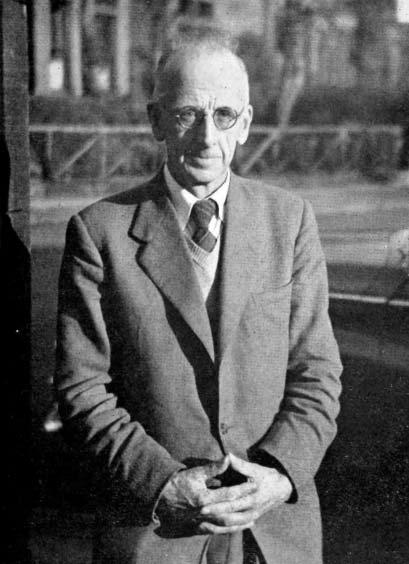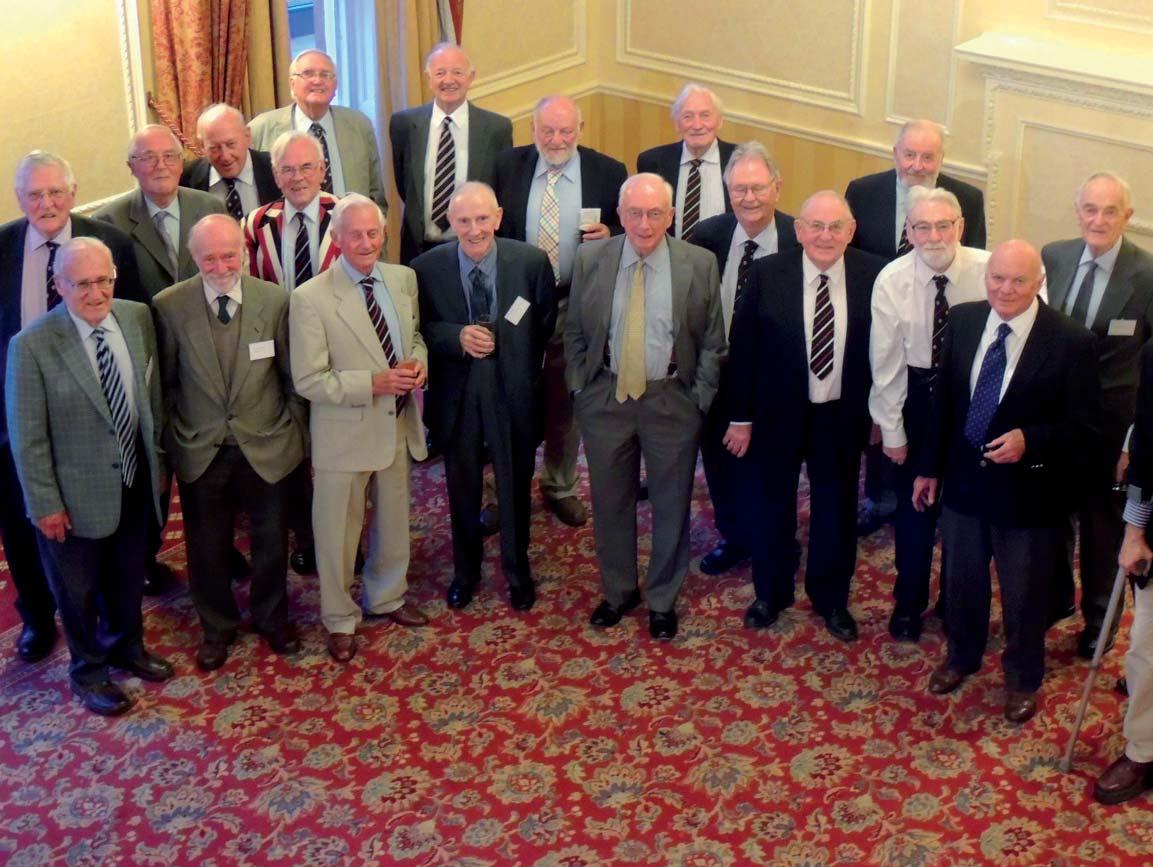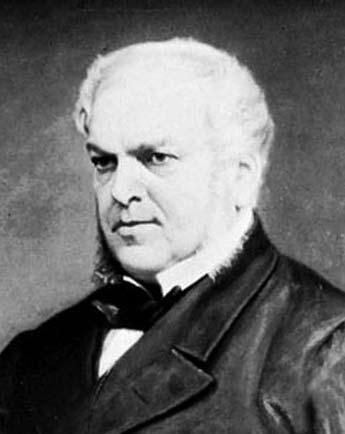
6 minute read
The O.T.C. in 1914
from ONA 93
The O.T.C. in 1914 The Novocastrian extracts compiled by Mike Barlow (53-64)
Surprisingly little has changed in the 100 years that have passed since the First World War. Parades in school taught the cadets the elements of Certificate A (very like the Basic and Advanced Proficiency that is taught today), which involved drill, map reading, fieldcraft and shooting. Unlike today, the papers had to be sent off to the War Office for marking, and a pass marked out potential officers.
Advertisement
There were two camps in 1914, one in Race week at Barnard Castle, and one in the summer on Salisbury Plain that for obvious reasons was cut short. To show how little has changed (except the fact that this was the only period when a Headmaster in uniform took command), excerpts have been taken from The Novocastian reports of the time: in the text there is reference to the N.E.C.S. – the North Eastern County School. In 1924 this became Barnard Castle School.
‘On Saturday 20th June, fifty-five cadets went into camp at Westholme, Marwood, near Barnard Castle. The Headmaster was in command. A better place for a camp could hardly have been chosen, the weather was splendid, and a very enjoyable and instructive week was spent.’
The next extract refers to The Field-Day during the camp, and will be very familiar to generations of cadets, as the scenarios are much the same today. One major difference in the last 60 years is that fixed bayonets are no longer issued to cadets! Some of you will remember the picture (below) dated 1949 previously seen in issue 69.
‘On the top of the cliff behind the camp stands Porter’s Farm, and here on the morning of the 25th June, we were marched and halted, what time Major Talbot, Lieut. Little, Sgt. Douglas reconnoitred with a squad of picked scouts, who had been sent out before we left camp. Presently word came in that the enemy (the N.E.C.S. O.T.C.) were advancing through the fields above the river. Accordingly our company moved off to take up its position. A certain hedge was decided upon as our last position and half way across the field in front of it, Sgt. Simpson extended his party, while Sgt. Bailes with a flanking party advanced on his left and Col.-Sgt. Potts took his men upon the right, both these parties extending along a wall
Left: Major Talbot, Headmaster (12-22) Below: A typical scene in 1914, cadets using fixed bayonets (photo dated 1949)


which gave excellent cover. Barely two hundred yards in front of them was the enemy, not yet deployed or extended but in fours, on whom Col.-Sgt. Potts and Sgt. Bailes opened a heavy and murderous fire.
But the enemy extended smartly and owing to their superior numbers drove us back from the wall, Col.-Sgt. Potts retiring to Sgt. Simpson, and Sgt. Bailes retiring to the next hedge, where his party occupied the left corner, sheltered by a low ridge planted with hawthorns. These conditions were also prevalent along the rest of the hedge, so our last position was quite strong.
Presently, when Major Talbot gave the word, the remaining sections retired to the hedge and all prepared to give the enemy a particularly warm reception.
Advancing by short rushes, the enemy were soon very close but closer they could not get, for on the right they were held up by our superior fire; on the left they attempted a flanking movement, but bunching themselves about fifty yards from the section holding our left wing, were very promptly annihilated, and the centre owing to lack of support was unable to move forward.
At this point the “cease fire” went and we were reformed and told to lie down until the second half of the morning's work was outlined.
The plan on which we were now to work was that the N.E.C.S. were retreating and we were to harass them as much as possible. One squad, under Cpl. Hicks, was detailed off to try and work round the left flank and another squad, under Cpl. Barnes, who was to cover himself with glory while so doing, was sent down into the valley to work round their right flank. The main-body advanced against the enemy slowly, so as to keep them occupied till the flanking parties came into action.
Cpl. Barnes came out of a wood on their left (i.e. our right) and enfiladed their left flank and part of their centre, so that the umpire decided they were all dead men. The “dead men,” however, did not realise this and turned round to punish our daring squad, whereupon our main body rushed the position they had been holding and our right flank once more annihilated the “dead men,” who were still hanging on to life and honour when the “cease fire” put an end to their post-mortem efforts with the rifle.
Thus ended the great and memorable field-day, which everybody found most enjoyable as well as interesting and instructive.’
Vol. XXVIII, No.3, July 1914, pp.85-86 and pp.97-98
The next camp, organised centrally on Salisbury Plain, was not such a happy affair. By this time the Archduke Ferdinand had been assassinated and Austria-Hungary and Serbia were making warlike noises.
‘At 8 a.m. on July 28th, thirty-seven officers and cadets of the corps entrained at Newcastle en route for Tidworth Pennings Camp, Andover, Salisbury Plain. We reached our destination at about 7p.m., and were relieved to find ourselves deprived of the doubtful pleasure of filling paillasses.
The routine of camp proceeded much as usual until Friday, July 31st, when we heard of Belgium’s refusal to allow German troops to pass through her territory. From that moment the whole camp became excited, as was shown by the crowds of cadets waiting for newspapers an hour or more before W. H. Smith & Sons’ shop opened.
Saturday brought the effect of “wars, and rumours of wars” nearer home, for we found that about half the cooks had been called up, and a call for volunteers to act as cooks was received.’
Germany declared war on Russia on 1 August, and France on the 3rd, and invaded Belgium on the 4th. On the same day Great Britain declared war on Germany.
‘Monday brought the news that we would have to leave the next day, Tuesday, instead of on Thursday. The cadets made the best of matters, and on Tuesday morning were up before reveille (4 a.m.); the one and only time that “Colours” had not to apply the swagger cane to any great extent. By 5.45 a.m. we had cleared up the lines, collected the blankets, etc., and nearly finished striking the tents –a very creditable performance.
After a journey which could only be called “rotten,” we arrived at Newcastle about 7 a.m., after a camp which I do not think anyone will forget in a hurry.’
Vol. XXIX, No.1, December 1914, pp.21-22
Life would not be the same again, particularly for those in the O.T.C. as many were called up to serve as Officers shortly afterwards, and some lost their lives as a consequence.
Unfortunately, The Novocastrian does not record the authors of the above reports, but the chances are high that they were prepared by the Cadet Sergeant Majors of the time, who were CV Potts and WBC Simpson.
Top left: Inspection, 1913: a scene much like those in 1914 Below: Camp at Westholme, Marwood, near Barnard Castle, June 1914











